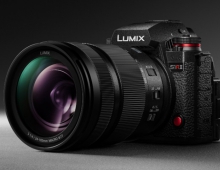
Panasonic Eliminates Lead In Plasma TVs
Panasonic has become the first company in the world to achieve the elimination of lead in Plasma Display Panels (PDPs) used as the central picture component in its Plasma TVs and Plasma Modules.
Non-use of lead content for manufacturing Plasma Display Panels (PDPs) began with Panasonic's new Plasma-TV lineup launched in Europe and U.S. in Spring 2006. With the recent introduction of the 103-inch PDP-TV, Panasonic has avoided the use of lead in all of its Plasma TV models for 2006.
In conventional manufacturing processes for Plasma Display Panels, lead oxide glass is used as a key component for the dielectric layer, electrodes, seal frit and other structural elements to form the panel. Until now, lead oxide glass was essential for adjusting the softening points of several different materials to build dielectric layers. If no lead oxide glass were used for PDP manufacturing, it would be hard to optimize the softening points of each material for stable production yields and quality. Also, development of an alternative material for lead oxide has been considered to be extremely difficult.
Panasonic announced that it has now successfully completely avoided the use of lead oxide glass with the application of the following innovative methods;
(1) Development of new materials for the dielectric layer, electrodes and other parts whose characteristics and reliability are similar to those of lead oxide glass. This has been made possible by the use of uniquely developed additives for certain elements with characteristics similar to lead oxide glass, and refined material composition of the non-glass components.
(2) In the Plasma Display Panel manufacturing process, heating conditions in every process have been optimized, thus enabling secured stable production yield and quality levels.
These new methods have been introduced at every Plasma Display Panel manufacturing plant and all of Panasonic Plasma TV models for 2006 are made with lead-free Panels.
In conventional manufacturing processes for Plasma Display Panels, lead oxide glass is used as a key component for the dielectric layer, electrodes, seal frit and other structural elements to form the panel. Until now, lead oxide glass was essential for adjusting the softening points of several different materials to build dielectric layers. If no lead oxide glass were used for PDP manufacturing, it would be hard to optimize the softening points of each material for stable production yields and quality. Also, development of an alternative material for lead oxide has been considered to be extremely difficult.
Panasonic announced that it has now successfully completely avoided the use of lead oxide glass with the application of the following innovative methods;
(1) Development of new materials for the dielectric layer, electrodes and other parts whose characteristics and reliability are similar to those of lead oxide glass. This has been made possible by the use of uniquely developed additives for certain elements with characteristics similar to lead oxide glass, and refined material composition of the non-glass components.
(2) In the Plasma Display Panel manufacturing process, heating conditions in every process have been optimized, thus enabling secured stable production yield and quality levels.
These new methods have been introduced at every Plasma Display Panel manufacturing plant and all of Panasonic Plasma TV models for 2006 are made with lead-free Panels.





















